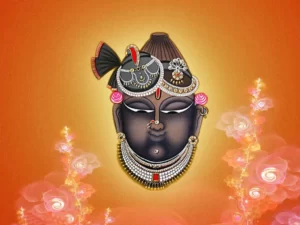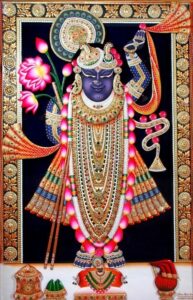The birth of Lord Krishna is one of the most celebrated and revered tales in Hindu mythology. It is a story filled with divine interventions, profound teachings, and the eternal battle between good and evil. This blog delves into the intricate details surrounding Krishna’s miraculous birth, the characters involved, and the deeper meanings behind the events that unfolded. Join us as we explore the rich tapestry of this legendary tale.
Setting the Stage: The Marriage of Vasudeva and Devaki
The tale begins with the marriage of Vasudeva and his wife, Devaki. They were blissfully united, but their happiness was short-lived due to the ominous presence of Kamsa, Devaki’s cousin. Kamsa was a tyrant who had a deep affection for his sister, yet his love was overshadowed by a prophecy that foretold his demise at the hands of Devaki’s eighth child. This prophecy set off a chain of events that would change the course of history.
Upon hearing the prophecy, Kamsa’s first reaction was one of fear and rage. He immediately decided to kill Devaki, believing that this would prevent the prophecy from coming true. However, Vasudeva, in a desperate plea, convinced Kamsa to spare Devaki’s life, assuring him that they would hand over the eighth child to him. This moment marked the beginning of a dark chapter for the couple, as Kamsa imprisoned them, determined to eliminate any threat to his reign.
The Birth of Krishna: A Divine Intervention
As the years passed, Devaki gave birth to seven children, each of whom Kamsa ordered to be killed immediately. The heinous act highlighted Kamsa’s tyrannical rule and his obsession with the prophecy. However, the story takes a miraculous turn with the birth of Krishna, the eighth child.
On a fateful night, amidst the confinement of the prison, Devaki gave birth to Krishna. This event was marked by extraordinary phenomena: the prison guards fell asleep, the chains binding Vasudeva broke, and the prison doors opened magically. Recognizing the significance of this moment, Vasudeva was instructed by the divine to take Krishna across the Yamuna River to Gokul, where he would be safe from Kamsa’s wrath.
The Journey Across the Yamuna
Vasudeva faced a daunting challenge as he prepared to cross the swollen Yamuna River during a torrential downpour. Yet, divine assistance was at hand. Adishesha, the serpent deity, appeared to shield Krishna from the rain. As Vasudeva waded through the turbulent waters, the Yamuna River itself parted, eager to pay homage to the newborn deity.
On the other side of the river, Nanda and Yashoda, a couple from Gokul, had just welcomed a baby girl. Unbeknownst to them, Vasudeva would exchange Krishna for their daughter, ensuring the safety of the divine child. This exchange was not merely a physical act; it symbolized the merging of divine forces, as Krishna represented both Vishnu and a beam of light that emerged from Nanda’s wife.
The Significance of Krishna’s Avatar
Krishna’s birth is not just a story of miraculous events; it signifies the convergence of various divine energies. Unlike previous avatars, Krishna’s arrival was marked by the union of two realms: that of Vishnu and the ethereal Goloka. This duality underlines Krishna’s importance in Hindu philosophy, representing both the sustaining aspect of the universe and the playful, loving nature of divinity.
The name “Nand Samaba,” meaning “born of Nanda,” reflects this duality. While Krishna was technically adopted by Nanda and Yashoda, he was also born of divine essence. This intricate relationship illustrates the profound nature of his avatar, where the mortal and the divine coexist seamlessly.
The Prophecy and Kamsa’s Fear
Upon learning of Krishna’s birth, Kamsa’s fear intensified. He was obsessed with the thought of his killer being born, which led him to send numerous demons to Gokul in an attempt to eliminate Krishna. This obsession highlights a crucial aspect of the narrative: the power of thought and intention. Kamsa’s fixation on Krishna inadvertently made him a yogi of sorts, consumed by the very fear that would eventually lead to his downfall.
This theme of obsession is mirrored in other mythological narratives, such as that of Ravana in the Ramayana, where fear and fixation on a divine figure ultimately lead to one’s demise. Kamsa’s relentless pursuit of Krishna illustrates the futility of attempting to escape one’s destiny.
The Role of Yoga Maya
Integral to this story is the presence of Yoga Maya, a divine energy that ensured the safety of Krishna and his family. When Kamsa attempted to kill the baby girl, she transformed into a goddess and proclaimed that Kamsa’s killer was already on the other side of the river. This act not only saved Krishna but also served to deepen Kamsa’s obsession with the prophecy.
Yoga Maya’s role is pivotal; she represents the protective force that guides and reassures the righteous while simultaneously challenging the wicked. Her presence reinforces the idea that divine intervention is always at play, guiding the course of events towards the ultimate triumph of good over evil.
Celebrating Janmashtami
The celebration of Krishna’s birth, known as Janmashtami, is a vibrant festival observed across India and by Hindu communities worldwide. It commemorates the arrival of Krishna and the victory of good over evil. The festivities often begin with fasting, singing devotional songs, and reenacting scenes from Krishna’s life.
Janmashtami is marked by various rituals, including the midnight puja, which signifies the exact moment of Krishna’s birth. The following day is celebrated as Gokul Ashtami, honoring the joy of Nanda and Yashoda upon discovering their divine son. This two-day celebration encapsulates the essence of Krishna’s life—his birth, his playfulness, and his role as a protector.
Conclusion: The Eternal Legacy of Krishna
The story of Krishna’s birth is more than just a tale of divine intervention; it is a profound narrative that explores themes of destiny, divine love, and the eternal struggle between good and evil. Through Krishna’s life, we learn about the importance of devotion, the power of faith, and the transformative potential of love.
As we celebrate Janmashtami, we are reminded of Krishna’s teachings and the timeless wisdom he imparted through his actions and words. He continues to inspire millions, guiding them on their spiritual journeys and embodying the essence of dharma. The legacy of Krishna is not confined to ancient texts; it lives on in the hearts of devotees, reminding us of the divine presence that pervades our lives.
Contact us for any details.



